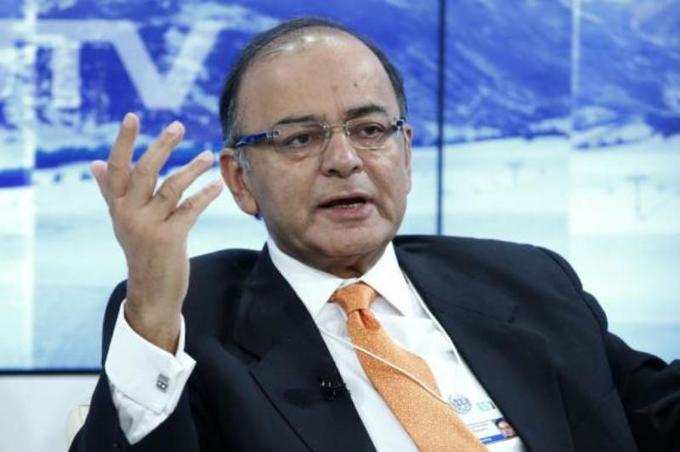 Tax proposals outlined in the Union Budget for 2015-16 presented by Finance minister Arun Jaitley has elicited mixed reactions from industry players and analysts. Broadly from a tax perspective, the decision to reduce corporate tax to 25% from 30% over four years, lay a road map to implement goods and services tax (GST) by April 2016, defer General Anti-Avoidance Rule (GAAR) by two years, cut tax on royalty/fee for technical services reduced to 10% from 25% and increase service tax to 14% from 12.36% are the key moves.
Tax proposals outlined in the Union Budget for 2015-16 presented by Finance minister Arun Jaitley has elicited mixed reactions from industry players and analysts. Broadly from a tax perspective, the decision to reduce corporate tax to 25% from 30% over four years, lay a road map to implement goods and services tax (GST) by April 2016, defer General Anti-Avoidance Rule (GAAR) by two years, cut tax on royalty/fee for technical services reduced to 10% from 25% and increase service tax to 14% from 12.36% are the key moves.“The finance minister has delivered on expectations in terms of bringing a much needed benign trend for corporate tax, reaffirmation of GST for coming financial year and deferral of General Anti Avoidance Regulations,” said Gokul Chaudhri, Leader, Direct Tax, BMR & Associates LLP.
Considering that the average corporate tax rate is around 23% globally, the cut in corporate tax will bring India at par with business destinations that are seen attractive. It will also help firms put in more money towards growth and investment besides boosting job creation.
A section of industry players feel some tax measures will help do away with a few regulations that have been seen as unwanted. “Abolition of ineffective wealth tax and burial of the Direct Taxes Code removes needless regulations. The accompanying promises for implementation of the recommendation of the Tax Administrative Reforms Commission, cleaning up of the rules for sensible indirect transfer regulations, lowering of the royalty tax withholding rates to competitive levels and indicative clarification on dividend distribution taxes will bring clarity in the tax laws,” said Chaudhri.
While the bunch of companies were anticipating to leverage the expected roll-out of GST in the near future is disappointed over further delay till April 2016, the deferral of the GAAR provision and the abolition of the Direct Tax Code is widely perceived to be beneficial to the industry and hence be applauded.
“Overall, it is a positive set of proposals from an indirect tax standpoint with focus on the larger GST reform agenda and certain near term measures to address industry issues,” said Rajeev Dimri, Leader, Indirect Tax, BMR & Associates LLP.
In addition, the tax reduction on royalty fees for technical services is expected to make these services more cost-effective and enliven operations of tech-based firms.
There has also been emphasis on multiple themes in the Budget speech like Make in India, ease of doing business, realignment of tax rates and cesses. “Near term measures to address issues around accumulation of tax credits, inverted duty structure, time limit for availing credits and maintenance of documentation online including digital invoices are steps in the right direction,” said Dimri.
Besides, there is a welcome urgency and a roadmap for bringing back black money into the mainstream, thereby providing possible buoyancy to indirect tax revenue collections. While, the crackdown on illegal holding of assets and income outside India was expected, but the aggression with which the Finance Minister raised this issue is meant to convey the message that evaders will be dealt with strictly.
The private equity and venture capital industry is one sector that stands to hugely benefit from a tax perspective. Tax pass-through for all Category I and Category II funds, and the ability to blend foreign capital in AIFs are expected to lend greater access to funds for the PE and VC industry. This is likely to drive annual deployment of funds by sector players from over $10 billion currently to $30 billion in three years.
However, the hike in service tax, which will be transferred to the end-user, is expected to weaken consumer products sector’s revival (the sector grew about 7% in calendar 2014, its lowest in a decade, and is expected to rise 10% this year) and squeeze household budgets as consumers will have spend more on a range of categories including grocery shopping, eating out, movies, phone bills and grooming. The hike is excise duty on products including mineral water, aerated drinks and condensed milk will push prices up, squeezing households grocery spend. In fact, with falling prices of crude and palm oil, many consumer companies that use these commodities as raw materials were planning to cut prices to enliven demand which cannot be done now.
Also, one must not forget that the devil is in the detail. “The fine print of the bill will be important to know if the effective tax rate stands amended this year as surcharges having been raised and the road map for exemptions and tax holidays to be eliminated needs to be studied,” said Chaudhri.
Also, much of the reforms process outlined in the Budget proposals needs to be realised through tangible steps over a period of time. “It remains to be seen how reforms unfold and take shape in terms of GST implementation and TARC recommendations. Impact on prices would be interesting to watch with Budget proposals withdrawing service tax exemptions on construction of airports and ports, government services, increase in service tax rates and higher additional duties on petrol and diesel,” said Dimri.
While the budget set stage for long-term growth in a tax perspective, it seems to have failed to tackle immediate ground realities.
(Image: Reuters)